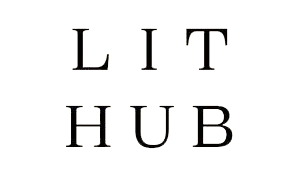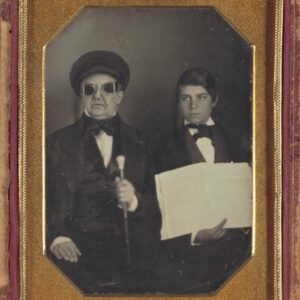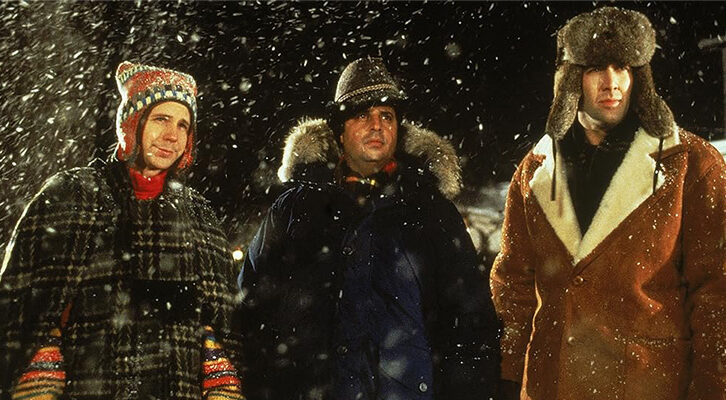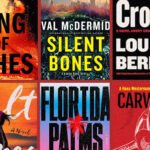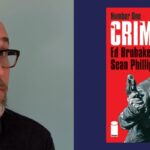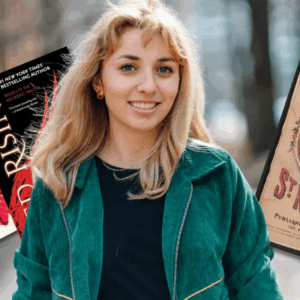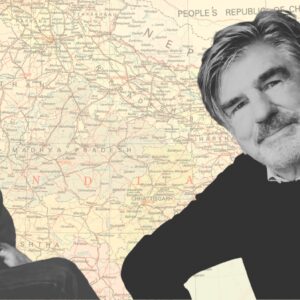
The Body Made Metaphoric: Heather Christle on Losing a Rib and Writing a Memoir
The Author of "In the Rhododendrons" Reflects on Illness, Virginia Woolf, and a Fairytale Deal
You shouldn’t be allowed to remove a rib from the body of any writer, let alone a poet. The metaphor is so loud that, post-surgery, she will be made to cope with not only the usual aftereffects (constipation, a nick in the lung, pain requiring the hyperbolic-sounding ten on the ubiquitous progression of troubled faces), but also a lingering echo that will threaten to burst through every subsequent sentence she speaks or otherwise composes.
“They took my rib!” she exclaims.
“And did you make a woman?” replies the visiting friend, helping.
“No,” says the writer, hopeless dweeb of a god. “But I did,” she adds, “make a book.”
*
“Do you have a memoir in you, but are struggling to get it out?” asks the jacket cover of a how-to book. I think this is very funny, like a memoir is the object one struggles to explain to the emergency room proctologist. It also seems inaccurate; books pass through the body, are shaped in some ways by the body, but they do not—in my experience—simply emerge fully-formed from within.
t felt like a deal from a fairy tale: I give up my rib, and a little bearded man hands me my book, golden at last.
And yet! They took my rib! At the time I was trying to finish edits to In the Rhododendrons, a memoir I’d been working on for six years. It felt like a deal from a fairy tale: I give up my rib, and a little bearded man hands me my book, golden at last.
On April 2, 2024 I awoke to find my right hand and arm feeling heavy and swollen and tinged an unattractive shade between gray and dull reddish-purple. This seemed bad, so I went to the ER, where they told me I had a deep vein thrombosis near my collarbone, as well as a small pulmonary embolism.
The cause was Paget-Schroetter Syndrome, a rare condition in which one’s top rib, collar bone, and muscle have developed in such a way (often from repetitive strenuous exercise) that a major vein traveling through the area is slowly crushed to the point that one’s blood can no longer move along as usual, and instead clumps up into a pile of red goo.
“It’s most often found,” the surgeon told me after they’d transferred me to a hospital room in preparation for urgent treatment, “in extremely fit young athletes,” and I gave myself an A for the intense workouts I’d been doing almost daily for four years. Later, in the operating room, a nurse praised my muscle tone, and I stuck another gold star on my internal chart before losing consciousness. My vanity has no known cure.
During that initial hospitalization, the focus was simply on removing the clot, a two-part operation, between which I spent the night in the ICU in excruciating pain and a pool of my own urine. The latter condition was caused by the night nurse’s refusal to believe that a device with the horrific name of “Purewick” was not functioning correctly, along with his rejection of my request to, you know, check the sheets.
The former condition—the pain—was caused by the fact that he would not assist me in tilting my immobilized body slightly to the side, as he said it could cause the IV in my groin to stab my internal organs. Nor could he give me pain medication for fear of interfering with the various substances already flowing through my veins and sending my numbers—I had so many numbers—into emergency terrain.
“Please,” I said, but he did not hear me and walked away. I wept. My face went up to eleven. As if words were a ladder I could cling to instead of falling into the surrounding chasm I recited poems to myself, and when I ran out of poems was reduced to a simple chant: “I’m a poet, I’m a person, I’m a poet, I’m a person,” feeling utterly alone, cast away from all human concern.
Nothing existed but darkness and blinking dots. Red, yellow, green.
In the morning, when sunlight returned other colors to the room, the new nurses tsked over my predicament as they changed my bedding and the meds.
“You have to tell us these things!” they said. “We want to stay ahead of the pain.”
The next operation, the removal of the troublesome rib, did not take place for another month. Afterward, the surgeon showed me a picture. It looked like a spare rib, which, all things considered, it was.
*
The day before the emergency room, I had mailed a draft of the manuscript to my mother, because I needed her to verify the basic facts of the account, and because I knew she would find the pages hard going. I wanted to carve out the gentlest path toward the book’s publication. Then I went home and worked out with my new, heavier-than-usual weights, trying to take my mind elsewhere.
When I had begun work on In the Rhododendrons I’d imagined it as circling around the subject of Kew Gardens, the large botanic space where my mother played as a child, just down the street from where she lived on the west side of greater London. I knew how to create such a structure; I’d already done it with The Crying Book. From that central point at Kew, I thought, I’d find spokes radiating outward—personal and public histories, information scientific, economic, and cultural, with ongoing attention to the life and work of Virginia Woolf, who once resided nearby.
One radiating spoke of personal history would include a night I couldn’t quite remember, when I, a drunk fourteen-year-old, went with a man into an alley behind a London night club and came out with blood on my underwear. It wasn’t insignificant, but nor did it seem like the book’s center.
Month after month I added radius after radius: Kew Gardens’ enormous Palm House, and how once its glass was green, and the way Woolf described it shining “as if a whole market full of shiny green umbrellas had opened in the sun,” and its architectural similarities to the Crystal Palace, and how it was at the racetrack by the Crystal Palace that the first British pedestrian was killed by a car, and how—before she was struck—the victim held up her umbrella as if it might protect her.
This was just one line of investigation. The manuscript bulged to more than 120,000 words, which my agent—heroically—read and gently suggested I trim down. There’s a line from a Tony Tost poem I often think about: “I don’t know how to talk about my biological father, so I’m going to describe the lake.” I had so many lakes. I began the process of draining them.
It makes sense that the act of bringing a demanding book to completion would become metaphorically entwined with my simultaneous medical adventures.
In my first conversation with my editor, she asked me what I thought the book was, at its core, about, and I reached for a convenient lie: the book was—allowing for intermittent divergence—about three women. My mother, Virginia Woolf, and me.
Then I saw, to my dismay, that this was true, which meant that not only would I have to continue my draining, but I would also have to look directly at events from my own life I’d up to this point kept underwater. Harder still, I’d have to perceive the relations between them.
I moved through old diaries, letters, conversations with family, often wishing I was finding meanings other than what was there, but once learned, the book required my new understanding’s presence. You can’t unknow a thing, but you can shape it into words that satisfy, that make a whole where before there was none.
When I slipped the manuscript into an envelope to send to my mother, my hands shook. I had done everything in my power to be fair, to understand her experiences too, but as people keep reminding me, quoting Dani Shapiro, “Nobody ever says Yay! There’s a memoirist in the family!”
Was it the strain of imagining my mother reading my book that caused me to pick up heavier weights than usual that night, working out to the point of demolishing thought? Was the writing of the book, like the removal of the rib, a kind of release?
When I’m in the throes of writing, the entire world exists in potential relation. It is, to tell the truth, often thrilling, even when tackling difficult subjects. Likenesses abound and nothing is without several meanings.
“Everything,” Woolf once teased a poet she loved, “in fact was something else.” It makes sense that the act of bringing a demanding book to completion would become metaphorically entwined with my simultaneous medical adventures.
It was from within that entwined state that I got into the habit of asking myself what I would do if I had to choose between the book’s existence or getting to keep my rib, thereby avoiding months of multiple surgeries and my ongoing, difficult recovery. I kept choosing the book.
And that’s good to know. It means I believe in the work, despite my usual (and Woolf-like) anxieties about its imminent appearance in the world.
But that’s not what happened. There was no little man eying my rib with a golden book in his hand. (What would he even do with it?) The small hollow that now sits below my collarbone bears no resemblance to the shape of my pages.
Though I can draw forth connections (the workout I already mentioned, my habit of working crouched for hours hunched over my laptop on the closet floor, my posture that of an extremely focused and well-trained rat), there are too many other factors I’d have to leave out to make that simplified meaning work.
And so I keep forcing myself to admit that there was no trade, no deal, no fairy tale. Here is the book, here is my rib. One is a story, the other my life. One is art, the other my body. I do know the difference. It’s just that—for better, for worse, in sickness and in health—I live in them both.
______________________________

In the Rhododendrons: A Memoir with Appearances by Virginia Woolf by Heather Christle is available via Algonquin.
Heather Christle
Heather Christle is the author of the poetry collections The Difficult Farm; The Trees The Trees, which won the Believer Poetry Award; What Is Amazing; and Heliopause. Her poems have appeared in The New Yorker, London Review of Books, Poetry, and many other journals. She teaches creative writing at Emory University in Atlanta. The Crying Book is her first book of nonfiction.








